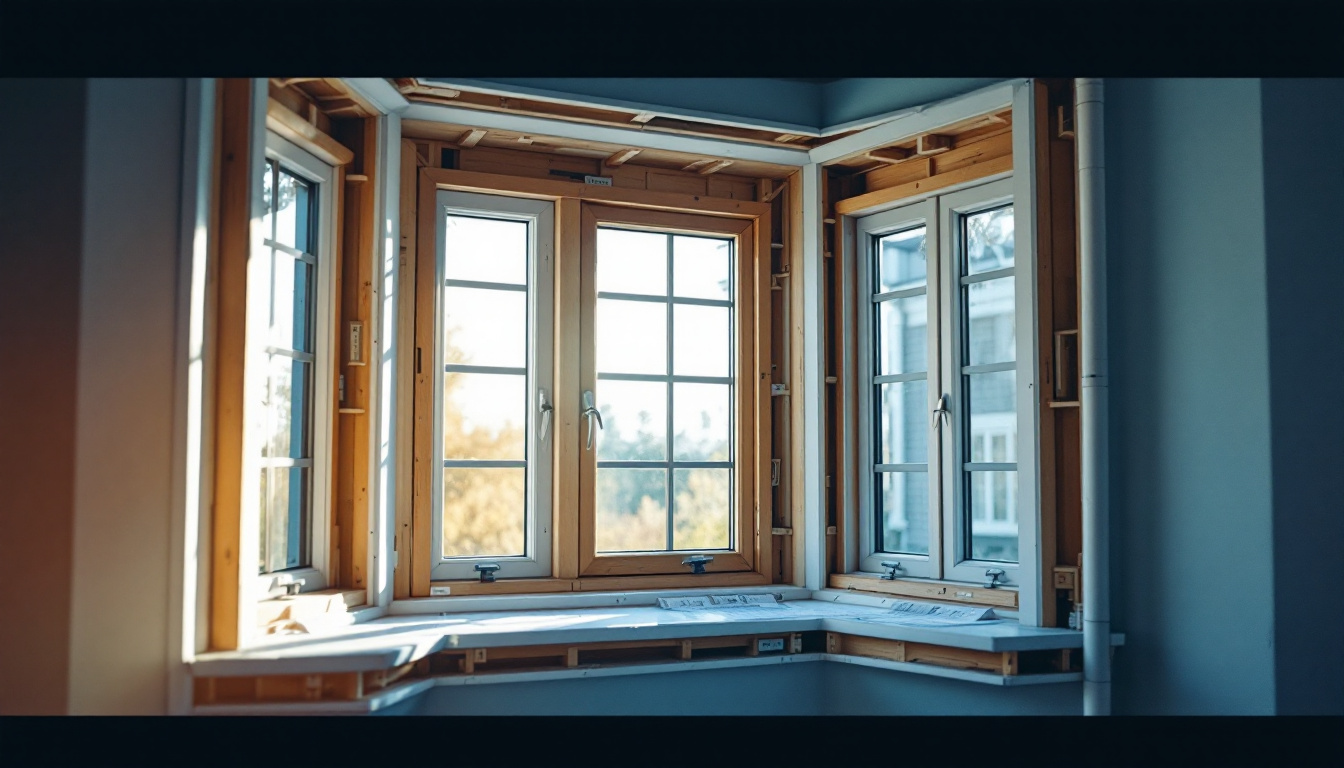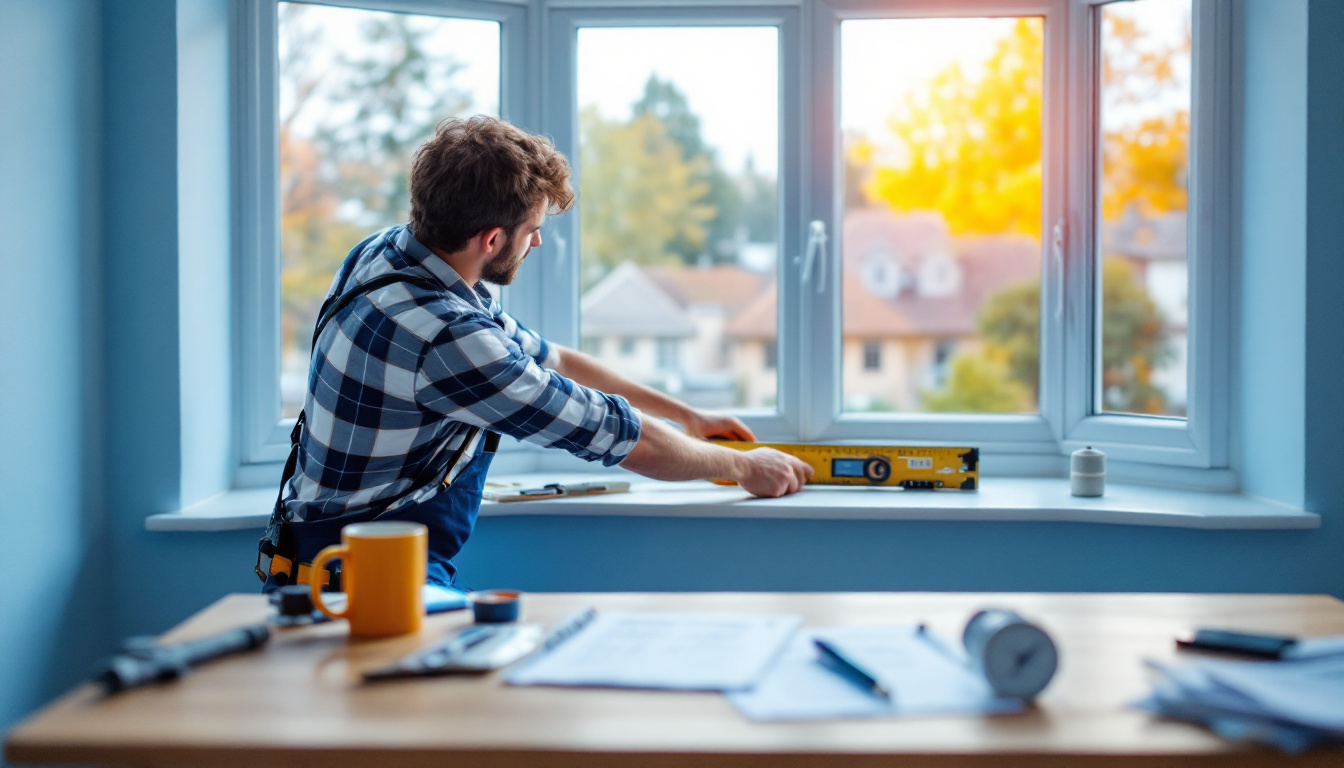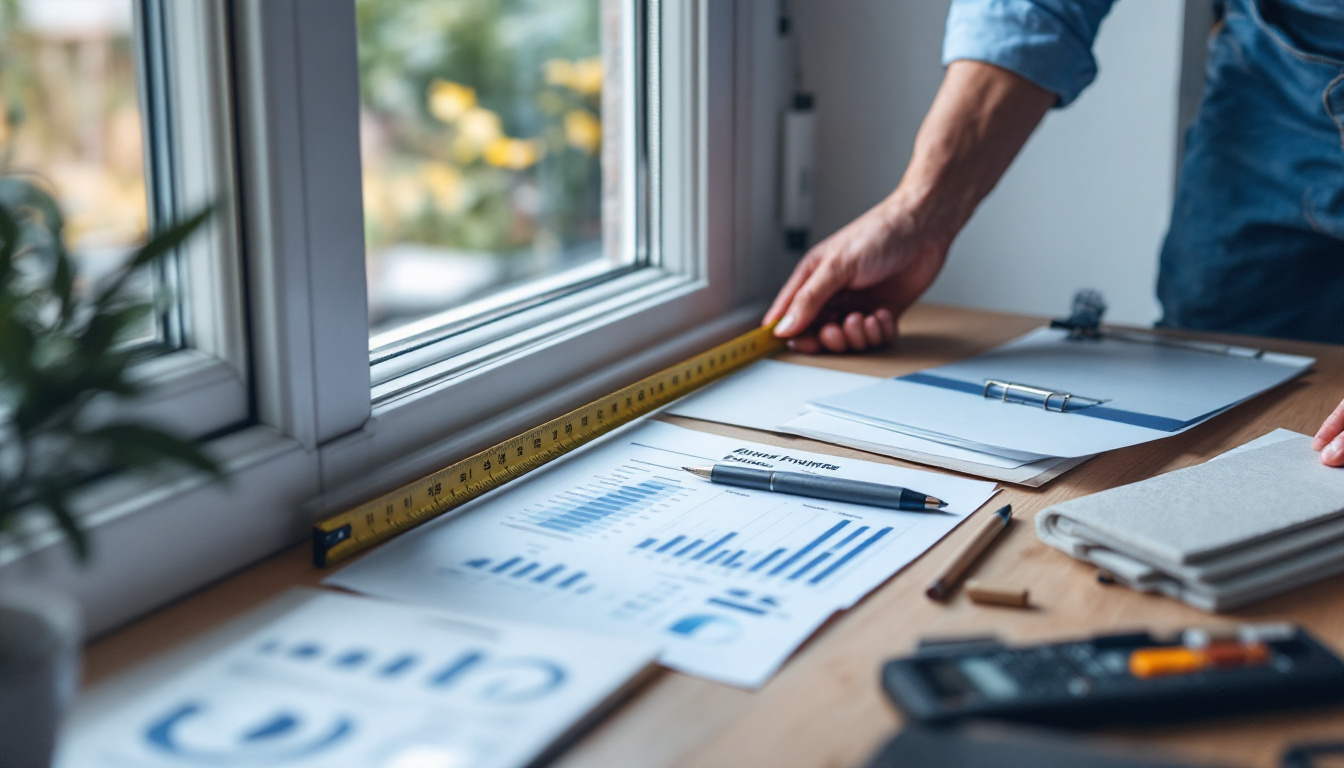Bay windows add architectural interest, increase natural light, and create additional space in your home. However, understanding the costs involved in bay window installation can be complex due to the various factors that influence pricing. This comprehensive guide breaks down everything you need to know about bay window installation costs, helping you budget effectively for this valuable home improvement project.
Understanding Bay Window Basics
Bay windows are a distinctive architectural feature that extends outward from the main walls of a building, creating a bay in a room. Before diving into costs, it’s important to understand what makes bay windows unique and why they might be worth the investment.
What Defines a Bay Window?
Bay windows typically consist of a central picture window flanked by two smaller windows set at angles. This three-dimensional projection creates additional interior space while allowing light to enter from multiple directions. Unlike flat windows, bay windows create a small nook or alcove inside your home that can serve as a reading area, breakfast nook, or decorative space.
The angled side windows can usually be opened for ventilation, while the larger center window is often fixed. This combination provides both the panoramic views of picture windows and the practical ventilation of operable windows.
Common Bay Window Configurations
Bay windows come in several configurations, each with different cost implications:
- 30° Bay Windows: These feature side windows set at 30-degree angles, creating a more subtle projection.
- 45° Bay Windows: The most common configuration, with side windows at 45-degree angles, offering a balance of projection and view.
- 90° Bay Windows: These create a squared-off bay with side windows at right angles to the wall.
- Box Bay Windows: Similar to 90° bays but typically smaller and more compact.
- Custom Configurations: Bay windows can be customized with different angles and numbers of panels, though this increases cost.
Average Bay Window Installation Costs
Bay window installation costs vary widely based on size, materials, and complexity. Understanding the average price ranges can help you establish a realistic budget for your project.
National Cost Averages
In 2024, homeowners can expect to pay between $1,800 and $7,500 for a standard bay window installation. This wide range reflects the significant variation in window size, quality, and installation complexity. Premium installations with high-end materials and custom features can exceed $10,000.
The national average for a mid-range bay window installation typically falls around $3,500 to $4,500. This price point generally includes a standard-sized bay window with decent quality materials and professional installation.
Cost Breakdown by Window Size
The size of your bay window significantly impacts the overall cost. Here’s a breakdown of typical costs by window dimensions:
- Small Bay Windows (3-6 feet wide): $1,800 – $3,000
- Medium Bay Windows (6-8 feet wide): $3,000 – $5,000
- Large Bay Windows (8-10+ feet wide): $5,000 – $7,500+
These prices typically include the window unit itself and standard installation. Custom sizes or unusual dimensions will generally increase costs by 15-25%.
Material Cost Variations
The materials used for your bay window frame significantly impact both performance and price:
- Vinyl: $1,800 – $4,000 (Most affordable option with good insulation properties)
- Aluminum: $2,500 – $5,000 (Lightweight and durable but less energy efficient)
- Fiberglass: $3,000 – $6,000 (Excellent durability and energy efficiency)
- Wood: $4,000 – $7,500+ (Traditional aesthetic with premium pricing)
- Composite: $3,500 – $6,500 (Combines wood appearance with modern durability)
Factors That Influence Bay Window Installation Costs
Beyond the basic window unit and standard installation, several factors can significantly impact your total project cost. Understanding these variables helps you anticipate potential additional expenses.
Structural Modifications
Installing a bay window often requires structural modifications to your home’s exterior wall. If you’re replacing a flat window with a bay window, the wall opening must be modified to accommodate the new projection. This typically involves:
Removing part of the existing wall, installing a proper header to support the weight above the window, creating a roof for the bay projection, and ensuring proper support underneath the window. These structural modifications can add $1,000 to $3,000 to your project cost, depending on the complexity of the work required.
Energy Efficiency Features
Energy-efficient bay windows may cost more initially but can provide significant long-term savings on heating and cooling costs. Premium energy features include:
- Low-E Glass: Adds $300-$500 to window cost but can reduce energy loss by up to 30-50%
- Double or Triple Glazing: Adds $200-$800 depending on the size of the window
- Gas Fills: Argon or krypton gas between panes adds $100-$300 but improves insulation
- Warm Edge Spacers: Add $100-$200 but reduce heat transfer around window edges
Many homeowners find that these energy-efficient upgrades pay for themselves within 3-7 years through reduced energy bills, making them a worthwhile investment despite the higher upfront cost.
Installation Complexity
The complexity of your installation can significantly impact labor costs. Factors that increase installation complexity include:
Second-story or higher installations typically add 15-30% to labor costs due to safety requirements and additional equipment needed. Installations in older homes may require addressing unexpected issues like rot, insect damage, or outdated framing techniques. Difficult access points or landscaping obstacles can increase labor time and costs.
Additional Costs to Consider
When budgeting for bay window installation, several additional costs should be factored into your planning to avoid surprises.
Permits and Inspections
Most municipalities require building permits for bay window installations, especially when structural modifications are involved. Permit costs vary widely by location but typically range from $100 to $500. Some areas may also require inspections during or after installation, which can add to the timeline and potentially the cost of your project.
Working with a professional installer often simplifies this process, as experienced contractors typically handle permit applications and scheduling inspections as part of their service.
Interior and Exterior Finishing
After the window is installed, additional finishing work is usually required to complete the project:
- Interior Finishing: $500-$1,500 (Includes drywall, trim, windowsill, and painting)
- Exterior Finishing: $300-$1,000 (Includes siding repair/replacement, flashing, and weatherproofing)
- Roof Integration: $400-$1,200 (Ensuring the bay window roof properly integrates with existing roofing)
These finishing costs are essential to ensure your bay window is properly sealed, insulated, and aesthetically integrated with your home’s interior and exterior.
Window Treatments
Bay windows often require specialized window treatments due to their unique shape and projection. Custom blinds, shades, or curtains for bay windows typically cost 20-50% more than treatments for standard windows. Budget $300-$1,000 for basic treatments or $1,000-$3,000+ for custom, high-end solutions.
Cost-Saving Strategies
While bay window installation represents a significant investment, several strategies can help manage costs without compromising quality.
Timing Your Installation
Window installation companies often offer seasonal discounts during their slower periods, typically late fall or winter in many regions. Scheduling your installation during these off-peak times can save 10-15% on your total project cost. Additionally, planning your installation several months in advance gives you time to watch for sales and special promotions from manufacturers and installers.
Exploring Rebates and Incentives
Energy-efficient windows may qualify for various rebates, tax credits, or incentives that can offset your costs:
Federal tax credits for energy-efficient home improvements can provide up to 30% of the cost (with caps) for qualifying windows. Utility company rebates often range from $200-$500 for energy-efficient window installations. State and local incentive programs vary widely but can provide additional savings opportunities.
Research available programs in your area or ask potential installers about incentives they’re familiar with to maximize your savings.
Return on Investment
Understanding the potential return on your bay window investment helps justify the upfront costs and make informed decisions about your project.
Property Value Increase
Bay windows typically increase home value by 70-80% of their installation cost. For example, a $5,000 bay window installation might add approximately $3,500-$4,000 to your home’s market value. This return rate is higher than many other home improvements, making bay windows a financially sound investment for many homeowners.
Beyond the direct value increase, bay windows can also enhance curb appeal and create a distinctive feature that helps your home stand out in a competitive real estate market.
Energy Savings
Modern, energy-efficient bay windows can reduce energy costs by 10-25% compared to older, inefficient windows. For a typical home, this might translate to $100-$300 in annual energy savings. While these savings alone won’t quickly offset the installation cost, they contribute to the long-term value of your investment and improve comfort within your home.
Choosing the Right Installation Professional
The quality of installation significantly impacts both the performance and longevity of your bay window. Selecting the right professional is crucial for ensuring value for your investment.
Evaluating Contractors
When selecting a contractor for your bay window installation, consider these key factors:
- Experience specifically with bay window installations
- Proper licensing and insurance coverage
- Detailed written estimates that break down all costs
- References from previous bay window customers
- Warranty coverage for both materials and labor
Obtaining at least three estimates from different contractors allows you to compare pricing while also evaluating their professionalism, communication, and attention to detail during the estimation process.
Remember that the lowest bid isn’t always the best value. A quality installation that prevents future problems is worth paying a reasonable premium for experienced professionals with proven track records.
Understanding Warranties
Comprehensive warranty coverage protects your investment and provides peace of mind. Most quality bay window installations should include:
Manufacturer warranties on the window unit (typically 10-20+ years for frames and 10-20 years for glass components) and installer warranties on labor and workmanship (typically 2-10 years). Be sure to get all warranty information in writing and understand what is and isn’t covered before proceeding with your installation.





